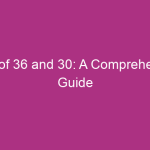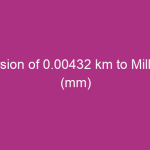The term “percent” is ubiquitous in various fields, representing a fractional value relative to 100. It is frequently encountered in financial reports, statistics, and everyday conversations. In this article, we will focus on converting 3.8 percent to its decimal equivalent, a valuable skill for accurate calculations and understanding numerical data.
Understanding the relationship between percentages and decimals is crucial. A percentage expresses a value as a fraction of 100, while a decimal represents a value as a fraction of 1. To convert a percentage to a decimal, we simply divide it by 100. In the case of 3.8 percent, we divide 3.8 by 100 to obtain its decimal equivalent.
Performing the division, we get: 3.8 percent = 3.8 / 100 = 0.038. Therefore, 3.8 percent as a decimal is 0.038. To further illustrate the concept, let’s explore various examples and applications of converting percentages to decimals.
Examples and Applications of Converting Percentages to Decimals
Calculating Discounts and Sales Tax
In retail settings, understanding percentages is essential for calculating discounts and sales tax. For instance, if a product is discounted by 20%, we can convert it to a decimal (0.20) and multiply it by the original price to determine the discounted amount. Similarly, a sales tax rate of 6% can be converted to a decimal (0.06) and added to the product’s price to calculate the total cost.
Interpreting Statistics and Research Data
In statistics and research, percentages are frequently used to represent data trends and findings. By converting percentages to decimals, we can easily perform mathematical calculations and analysis on the data. For example, if a survey reports that 45% of respondents prefer a particular candidate, we can convert this to a decimal (0.45) to compare it with other candidates’ percentages or calculate the proportion of respondents supporting the candidate.
Financial Planning and Investment Returns
In the world of finance, percentages play a crucial role in understanding investment returns, interest rates, and financial projections. For instance, if an investment portfolio generates a return of 5% per year, we can convert this to a decimal (0.05) and multiply it by the initial investment amount to calculate the annual return in monetary terms. This allows for informed decision-making and financial planning.
Additional Examples and Applications
Here are a few more examples and applications of converting percentages to decimals:
Calculating Grades and Progress
In an educational setting, percentages are used to represent grades and track student progress. Converting percentages to decimals allows for easy averaging and comparison of grades. For instance, if a student scores 85% on a test, this can be converted to a decimal (0.85) to calculate their overall grade average.
Calculating Proportions and Ratios
Percentages can be useful for calculating proportions and ratios. For example, if a recipe requires 10% salt by weight, we can convert this to a decimal (0.10) and use it to determine the amount of salt needed for a specific quantity of other ingredients.
Understanding Probability and Risk
In probability and risk analysis, percentages are commonly used to express likelihood and uncertainty. By converting percentages to decimals, we can perform calculations to assess the probability of certain events or the risk associated with different scenarios.
Conclusion
Understanding how to convert 3.8 percent to a decimal is a fundamental skill in various fields. Whether it’s for calculating discounts, interpreting data, or making financial decisions, the ability to convert percentages to decimals empowers individuals with the ability to accurately analyze and utilize numerical information. This article has provided a comprehensive guide to converting 3.8 percent to its decimal equivalent and explored practical examples and applications of this concept.















Leave a Comment